Are you planning to take a day trip to Chichén Itzá from Valladolid, Mexico? Looking for all of the super fun logistical details? Read on!
This day trip guide will go over everything you need to know about visiting Chichén Itzá. It’ll include all the best things to do, places to stay, and tips and tricks to make your visit a success.
Disclosure: Some of the links below are affiliate links. When you purchase through links on my site, I may make a small commission (at no extra cost to you!).
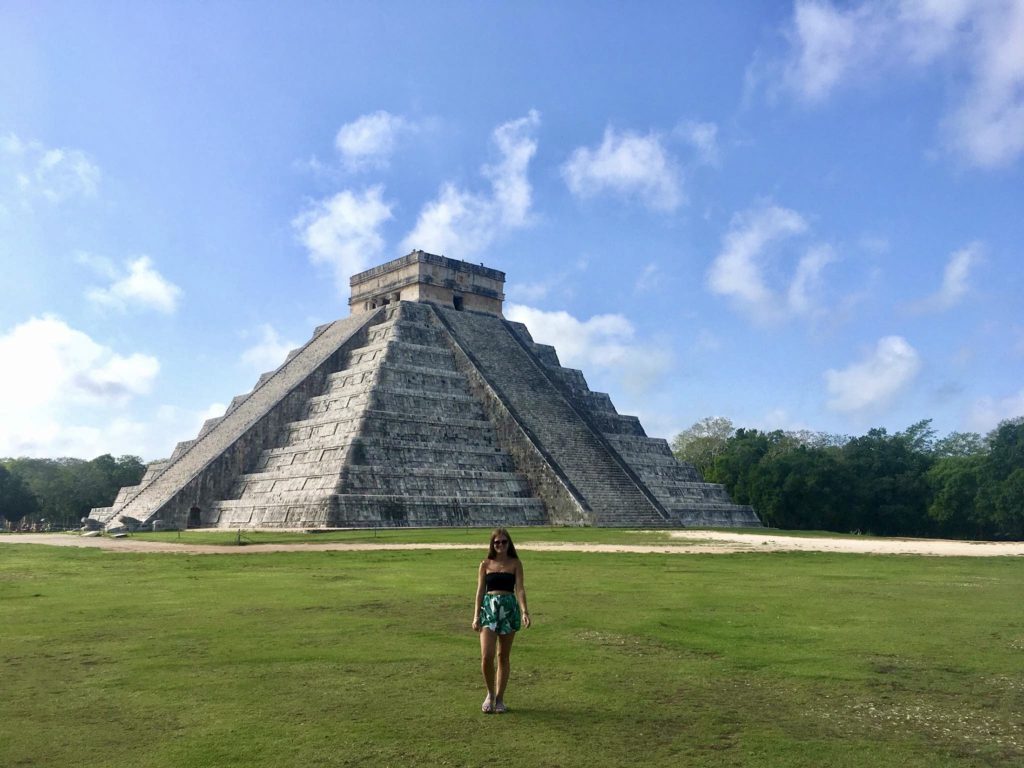
What is Chichén Itzá?
Chichén Itzá is a ruined, pre-Hispanic city that was built and inhabited by the Mayan people. Sometime between the 7th and 8th centuries, the city became an important economic hub in the region. Towering pyramids and intricate buildings were built to flaunt the power of the city’s elites.
By the 13th century, though, Chichén Itzá had started to fall into decline. Historians still don’t know exactly why the once-powerful Mayan civilization collapsed.
Over the years, Spanish invaders tried to establish a base at Chichén Itzá, but were stopped by fierce opposition from the Maya people. The site became overgrown by the surrounding jungle, only adding to its mystery and intrigue. In the 19th and 20th centuries, archeological excavation uncovered much of the ancient city and several buildings were restored to their former glory.
The Mayan ruins of Chichen Itza are a UNESCO World Heritage Site and have also been declared one of the New Seven Wonders of the World.
Where is Chichén Itzá?
Chichén Itzá (officially known as Zona Arqueológica de Chichén Itzá) is located in the Mexican state of Yucatán. The nearest town, Pisté, is 2.5 km (1.5 mi) away.
The archeological site is just off of the main highway that runs from Mérida (115 km/71 mi away) to Cancún (200 km/124 mi away).
Where should you stay to visit Chichén Itzá?
Many people that visit Chichén Itzá will stay on the Riviera Maya, a stretch of coastline on the northeastern Yucatán Peninsula. This includes popular tourist destinations like Cancún, Playa del Carmen, and Tulum. Depending on which city you depart from, it takes between 2 and 2.5 hours to get to Chichén Itzá by car or bus.
If you want to visit Chichén Itzá as a day trip, the best option would be to stay in the nearby colonial city of Valladolid. Besides being a wonderful place to visit on its own, Valladolid is only 45 minutes away from Chichén Itzá and can easily be reached by public transportation. There is a lot to do nearby and you can easily spend a few days there.
Another option is to stay in Pisté, the closest town to the ruins (it’s only a 10-minute drive). Hotels here can be a bit more expensive, but they could be worth it if you’re looking to get an early start right when the site opens.

How to get to Chichén Itzá from Valladolid
Colectivo
Taking a colectivo (shared minivan) is a great way to get to Chichén Itzá from Valladolid. Each bus fits around 14 people and often leave completely full. They may not be the most comfortable option, but they are the cheapest — a one-way ticket costs 40 pesos ($2 USD).
You can find the colectivo pickup spot in Valladolid as “Transporte Colectivo (Chichen Itza Y Piste)” on Google Maps. The first bus leaves at 7 am, with buses coming about every 30 minutes after that.
On the way back to Valladolid, you can hail a bus at the same spot where it dropped you off. Keep in mind that some drivers don’t work on Sundays, so colectivo service could be less frequent.
ADO bus
ADO is a bus company that operates throughout the Yucatan Peninsula and Quintana Roo regions. Unlike the colectivos, ADO buses are large and spacious (think coach buses).
These buses are comfortable, quick, and relatively inexpensive. The biggest drawback is that the schedule isn’t super convenient for people looking to take a day trip. There aren’t a ton of options which could make your trip a bit limiting.
One-way tickets cost between 90 and 146 pesos ($4.60-7.47 USD) and can be bought on the ADO website in advance.
By car
Renting a car is the fastest and most convenient option. You’re fully in control of your departure times and can make any stops you want along the way!
There are no car rental shops in Valladolid, so you’ll need to get one before you arrive in either Merida, Cancun, Playa del Carmen, or Tulum.
Discover Cars is one of my favorite car rental booking sites. They compare all of the major dealerships so you get the best deal every time!
Driving to Chichén Itzá from Valladolid takes about 45 minutes. The road is safe, well-paved, and easy to navigate. Once you get there, you’ll need to pay about 30 pesos ($1.50 USD) for parking. Make sure to bring some spare cash because they don’t accept credit cards.
By taxi
Taxis are one of the quickest and most direct ways of getting to Chichén Itzá from Valladolid. A one-way trip takes about 40 minutes and costs between 500-600 pesos (about $25-30 USD).
You can hail a taxi from the bus station or Valladolid’s main square. Make sure to negotiate the rate before getting in as taxis in Mexico don’t use meters.
On the way back to Valladolid, it’s easy to find a ride from the taxi stand opposite the entrance.
Guided tour
Booking a guided tour is a great option if you don’t want to plan all of the travel logistics yourself.
In addition to visiting Chichén Itzá, many of these tours will include stops at cenotes or additional food/drinks (like this tequila tasting one!).
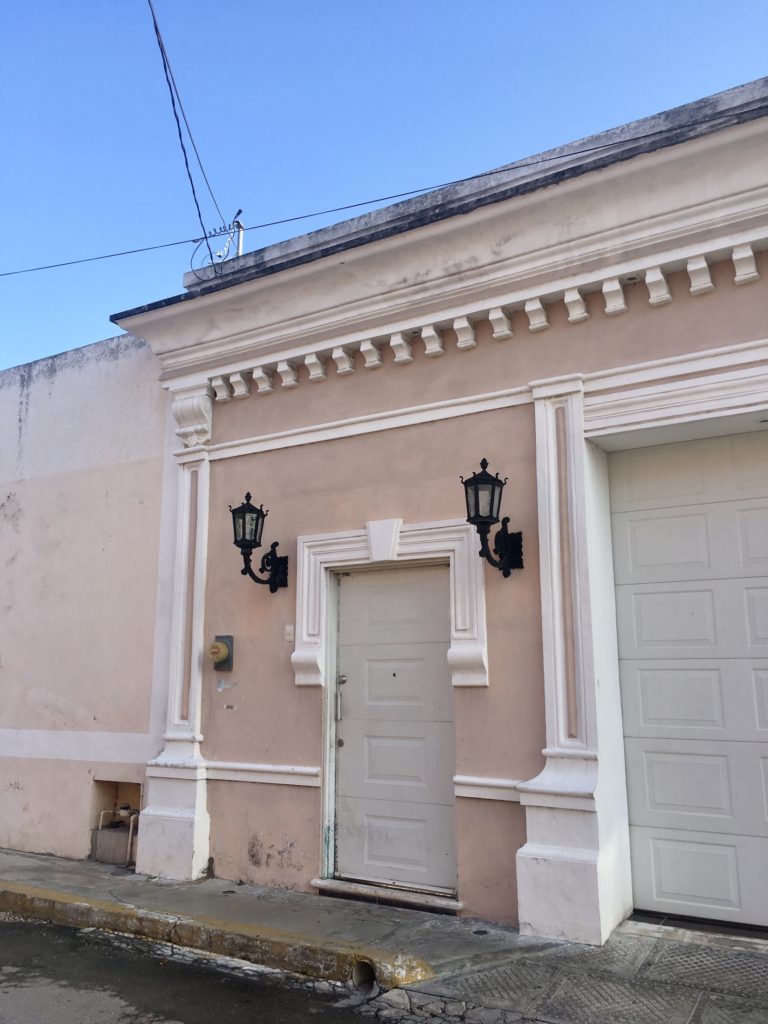
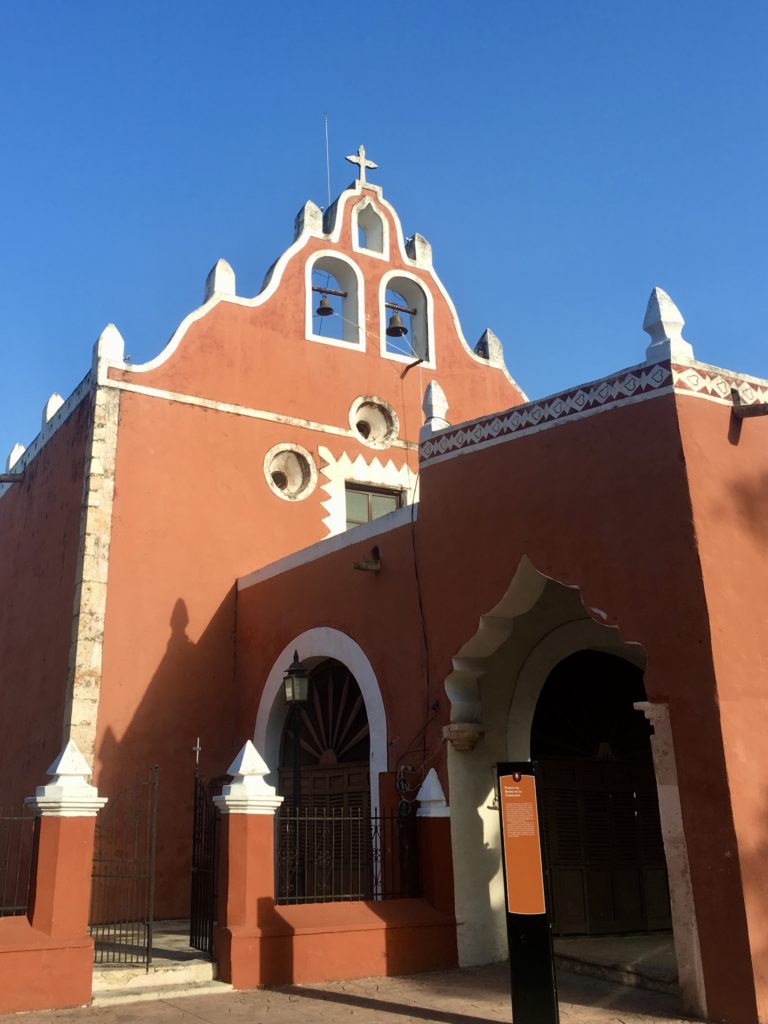
Best things to see at Chichén Itzá
Temple of Kukulcán (El Castillo)
This pyramid is the most iconic structure at Chichén Itzá. Dedicated to Quetzalcoatl, the feathered serpent god, the Temple of Kukulcán is filled with symbolism and detailed references. (For example, on the Spring and Autumn Equinoxes, the shadows cast by the corners of the pyramid look like a snake to represent Quetzalcoatl!)
El Castillo (“the castle” in Spanish) also contains astronomical references to the Mayan calendar. The amount of steps, terraces, and panels all correspond to important numbers of days, months, and years. The attention to detail and precision used to build the pyramid are part of what makes it so special today.


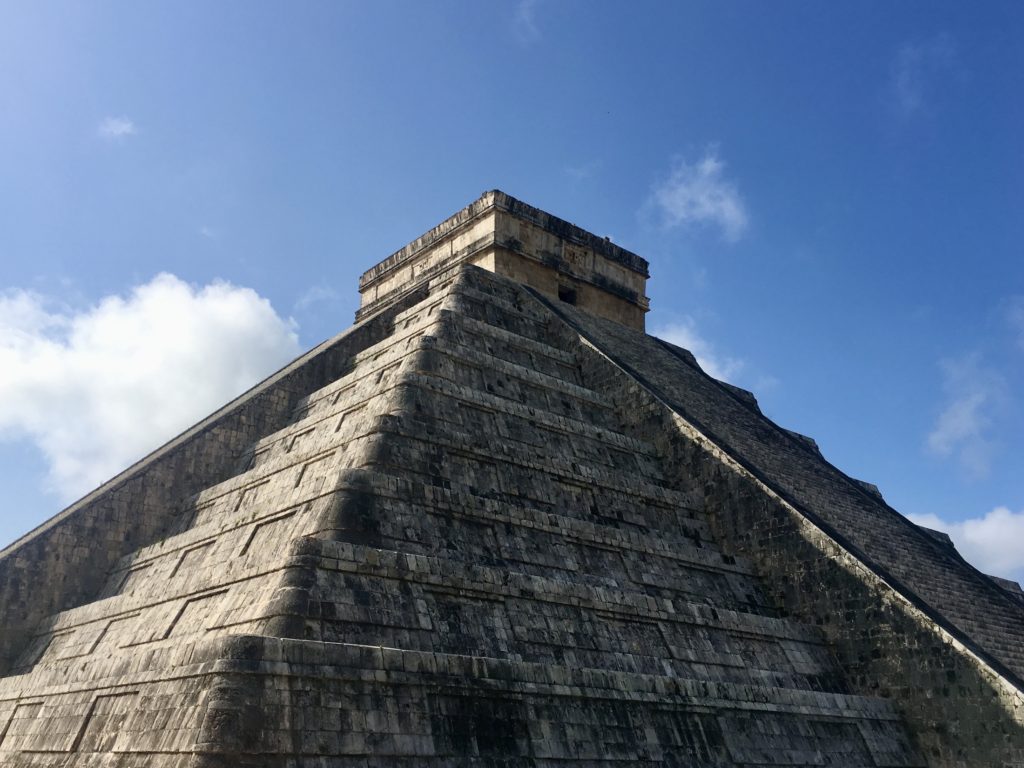
Temple of the Warriors
The Temple of the Warriors is a stepped pyramid with a collection of about 200 stone columns at the front (which are what gives it the nickname “Temple of the Thousand Columns”). It’s one of the most impressive buildings at the archaeological site of Chichén Itzá and might have been a place for the Maya people to hold large gatherings and special events.
Like the step pyramid of Kukulcan, the Temple of the Warriors holds a lot of astronomical and religious symbolism. At the top, there is a Chacmool statue that is believed to be the place where still-beating, sacrificial hearts were offered up to the gods. You’ll also see various depictions of snakes, eagles, and jaguars devouring human hearts.
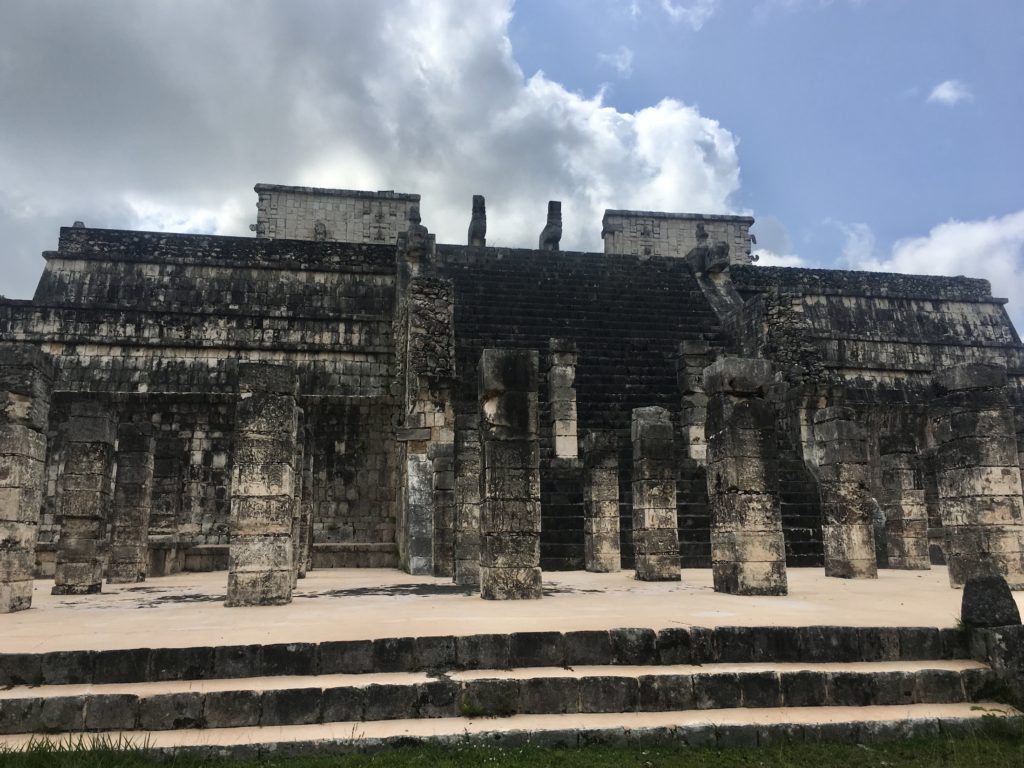
The Church (La Iglesia)
This detailed one-room building is one of the oldest buildings on site. The stone mosaics around the exterior of the Church depict animals and figures important in Mayan culture.
Above the middle of the door, you’ll find Chaac, the god of rain. Around the four sides, there are carvings of an armadillo, a turtle, a snail, and a crab. These are the four bacabes who correspond to the four cardinal directions and hold up the sky in Mayan mythology.
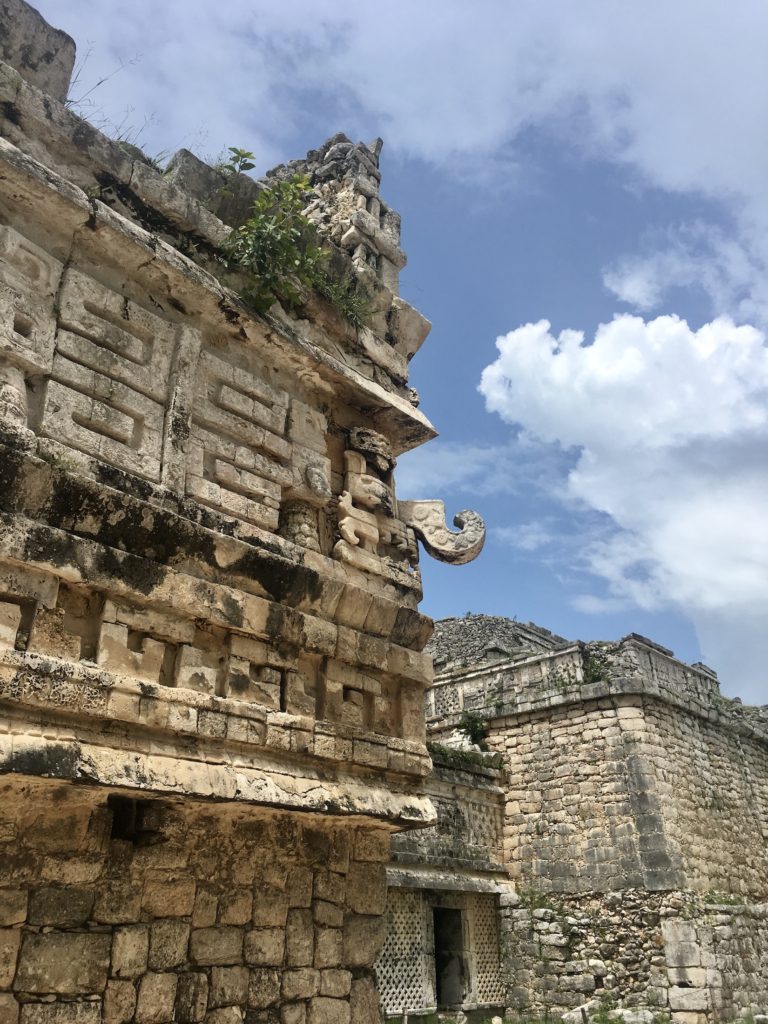
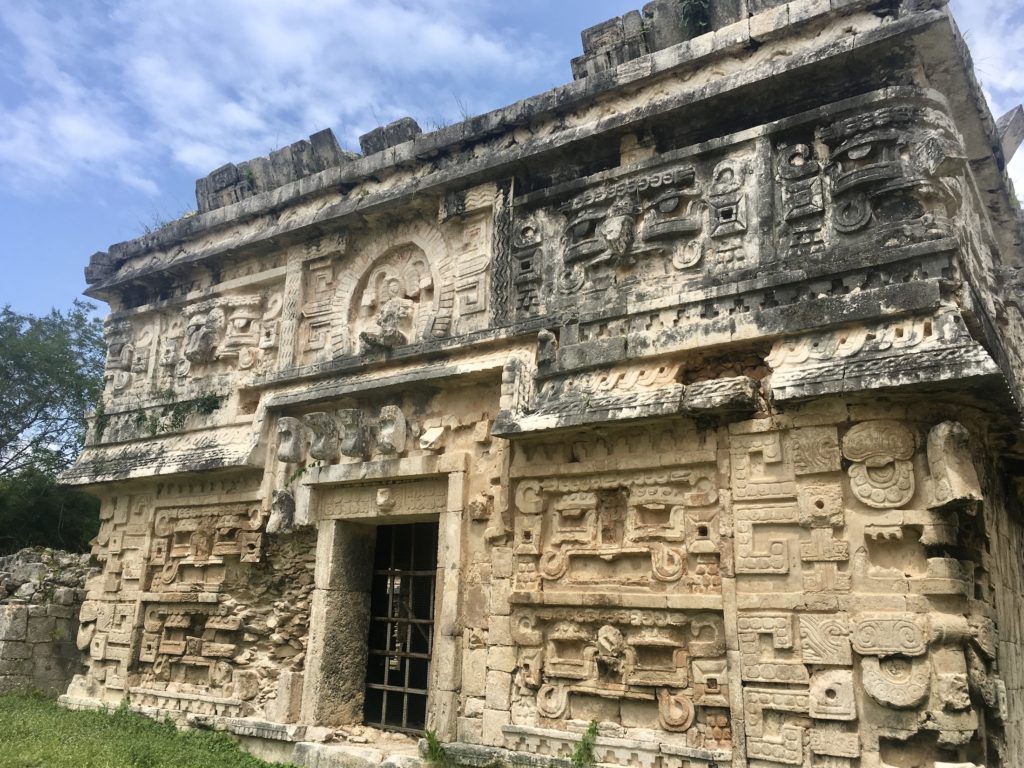
Grand Ball Court (Gran Juego de Pelota)
The Grand Ball Court (or Great Ball Court) is where thousands of people would gather to watch the traditional ball game. The aim of the game was to hit a rubber ball through the hoops on the court walls. Competition was fierce because the losers would face extreme consequences (up to and including death)!
More than being just a ball game, the entire process was considered a ceremonial ritual. From what we know, it probably represented the mythical combat between night and day.
A cool acoustic phenomenon happens at the ballgame court. If you stand on one end, you can hear someone talking all the way on the other end. This is because their voice reverberates along the North Temple wall!
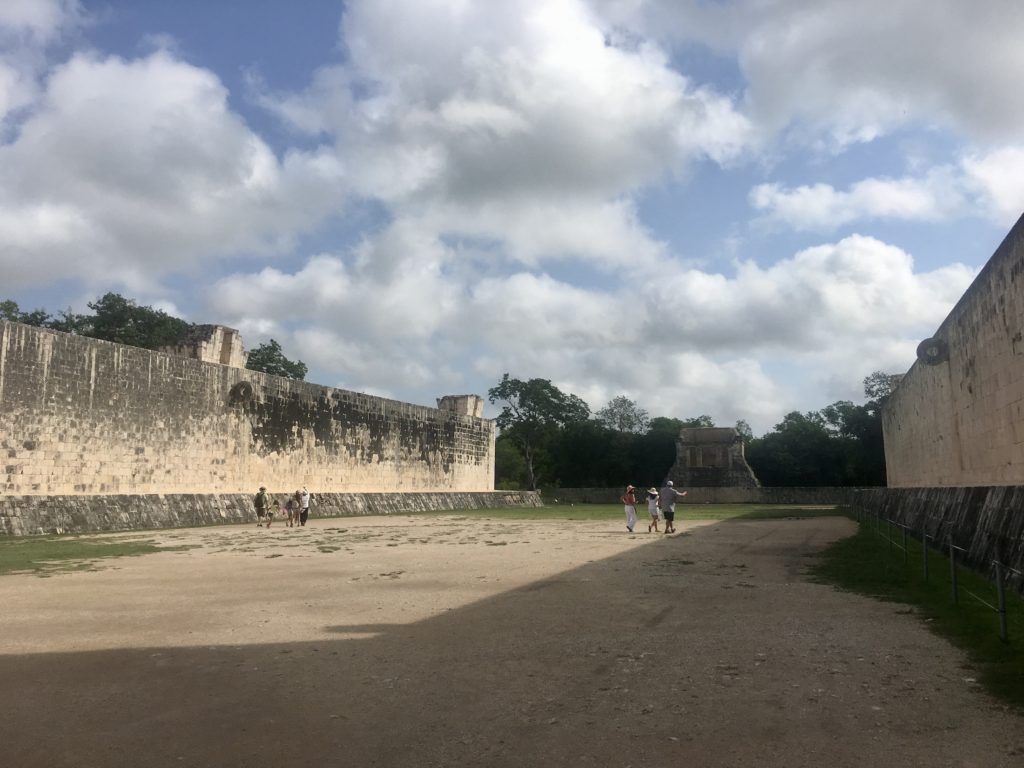
Temple of the Jaguars (Templo de los Jaguares)
Attached to the Grand Ball Court is the Temple of the Jaguars. Its towering columns are topped with a stone image of a serpent head (clearly a common theme at Chichén Itzá!). The main frieze that gives the temple its name depicts two jaguars around a round shield.
The Temple of the Jaguars and the nearby Temple of the Bearded Man most likely served as vantage spots for important members of society to watch the ball game.
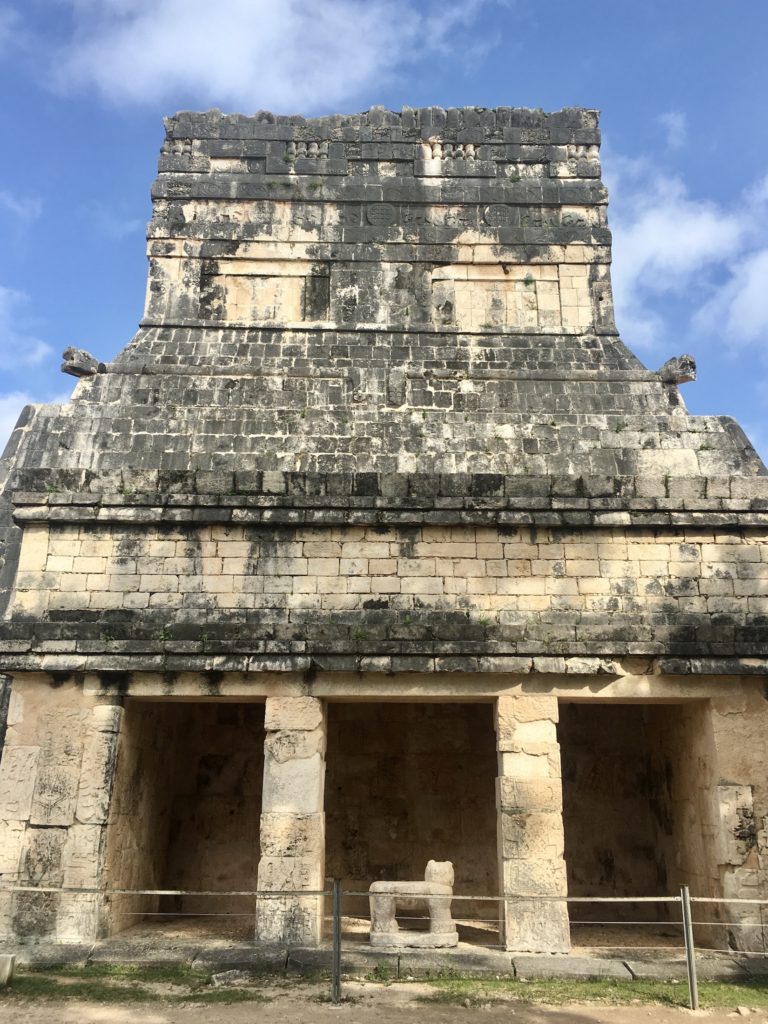
Temple of the Skulls (Tzompantli)
The Tzompantli is a large, rectangular structure with a platform on top. Around the outside walls, you’ll see hundreds of human skulls carved into the stone. There are also scenes of human sacrifice and skeletonized warriors.
The Temple of the Skulls is the clearest testimony to the practice of human sacrifice within Maya civilization.
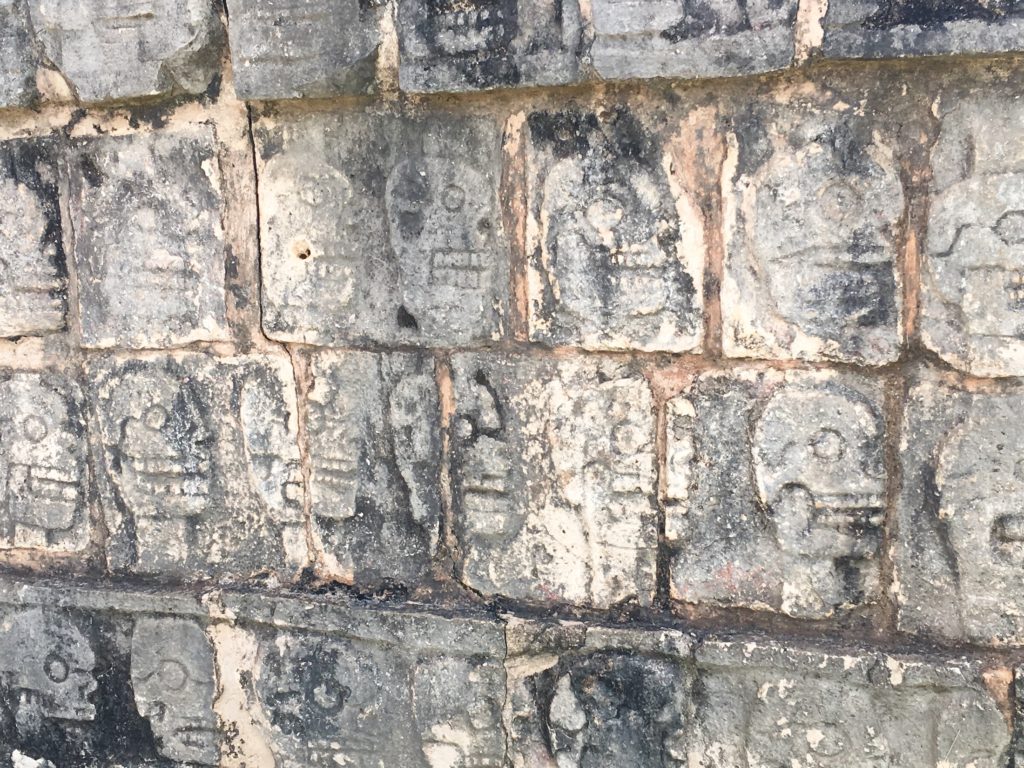
Sacred Cenote (Cenote Sagrado)
The Sacred Cenote is a naturally formed open well within the Chichén Itzá archeological site. At first, the Maya people made ceremonial offerings into the cenote with precious objects like jewelry. Later on, they began making human sacrifices into the sinkhole. The victims were often children, maidens, or warriors.
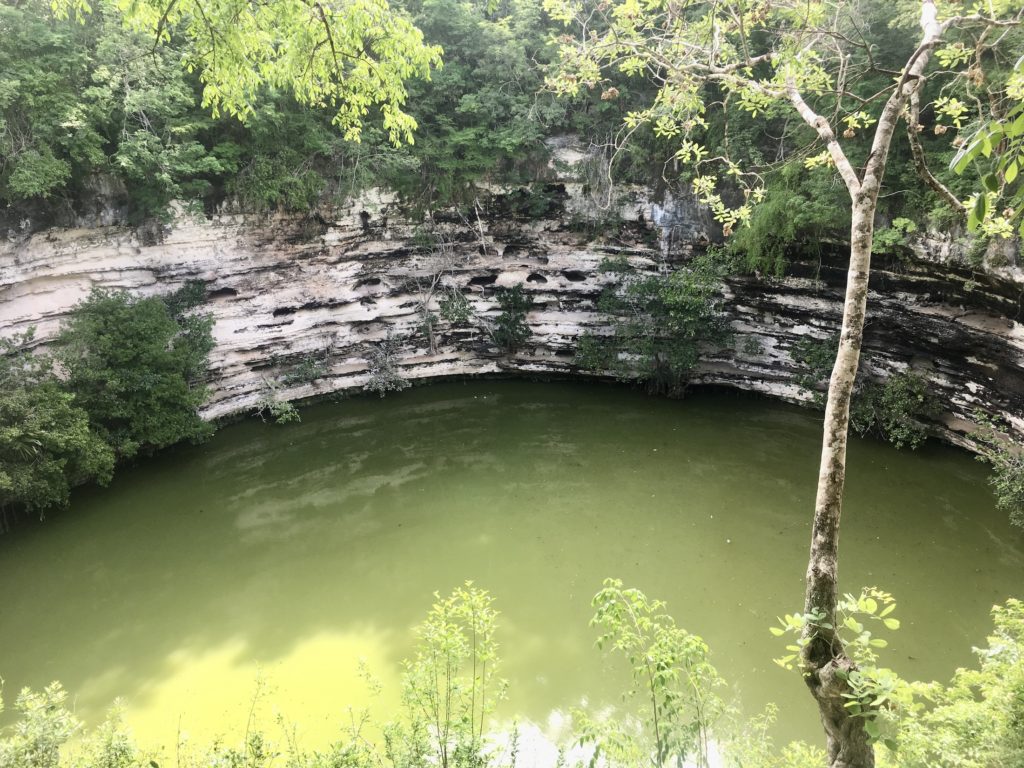
Cenote Ik Kil
Cenote Ik Kil is one of the best places to go for a refreshing swim in the area! Although it’s not actually a part of the Chichén Itzá site, it’s close enough that many people will also visit on the same day. If you’re taking a guided Chichen Itza tour, you’re likely to stop at the cenote as well.
To get to Cenote Ik Kil from Chichén Itzá, you can either walk or drive down the 2.8 km (1.7 mi) road. Entrance fees cost 80 pesos (about $4 USD).
Where to stay in Valladolid
Budget (under $15 USD/night)
Mid-range (between $15-40 USD/night)
Bougie (over $40 USD/night)
Chichén Itzá FAQ
Do I need a tour guide at Chichén Itzá?
No, you don’t need to hire a private tour guide to explore Chichén Itzá.
Having a guide is pretty handy, though, because they’re able to explain the cultural and historical significance of the structures you’re looking at. It can be really interesting and insightful to hear the site’s history in the moment. You can hire a guide at the entrance.
Is Chichén Itzá worth it?
Absolutely! They don’t call it one of the new wonders of the world for nothing.
While the Temple of Kukulcán is amazing, there are so many more cool things to see at Chichén Itzá as well. To have the best experience, make sure you arrive early (or later in the day) and give yourself enough time to explore the grounds properly — you won’t be disappointed.
How long do you need at Chichén Itzá?
I would allocate between 2 and 4 hours at Chichén Itzá, depending on how quickly you make your way around the site. This gives you enough time to wander around at your own pace and appreciate the ruins that you’re looking at.
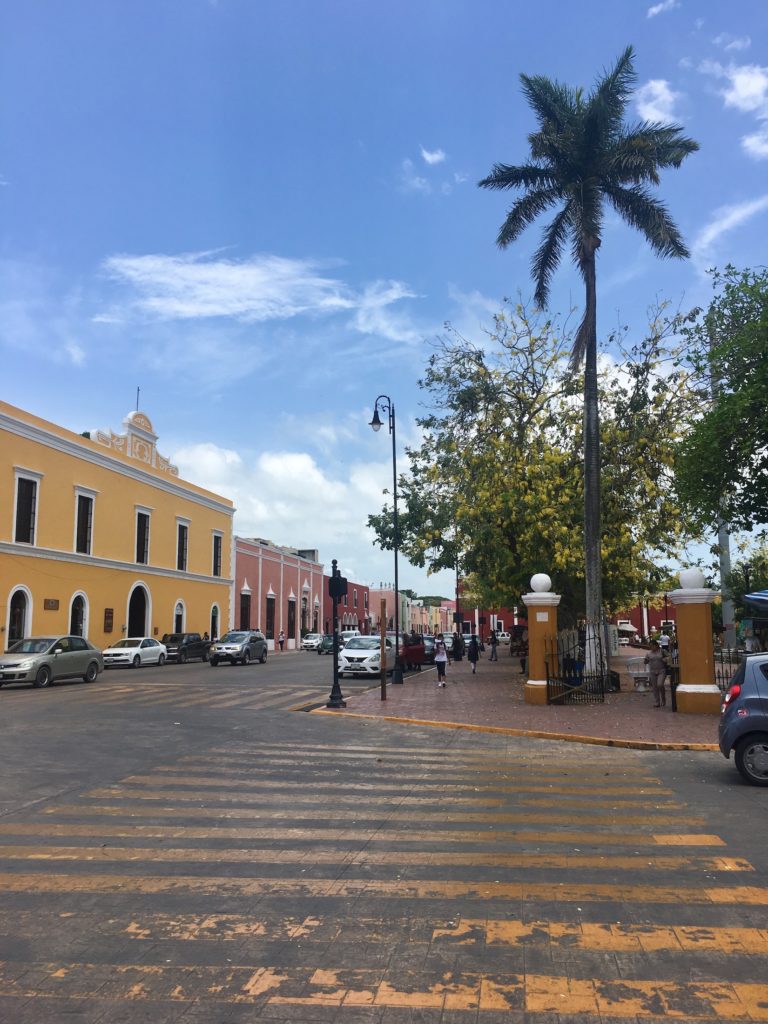
Tips for visiting Chichén Itzá from Valladolid
- Oftentimes when booking a car online in Mexico, the mandatory taxes and insurance are not included in the price. You might need to pay a bit extra when you pick the car up.
- For the best chance of getting pictures without other people in them, get to Chichén Itzá right when it opens. You’ll likely beat most of the crowds, which tend to trickle in on tour buses a few hours later.
- You can buy skip-the-line entrance tickets online to save time when you get there!
- Brace yourself for all of the vendors that try to sell trinkets and souvenirs — there’s hundreds of them! And every so often, you’ll hear a weird noise that sounds like a dying cat. Don’t be alarmed, it’s just a vendor blowing through a jaguar whistle.
- It can be very hot because certain areas of the site, like El Castillo and the Grand Ball Court, don’t have any shade. Make sure to bring some sunscreen, a hat, and a water bottle!
You’ll also love:
- Where to Stay in the Dominican Republic: Grand Palladium Punta Cana
- Lake Michigan Circle Itinerary: A 7-Day Road Trip Through 4 States
- 8 Common Travel Myths That Need to Be Debunked
Thanks for reading! Hopefully this post has helped you organize your trip from Valladolid to Chichén Itzá.
xoxo Niki


